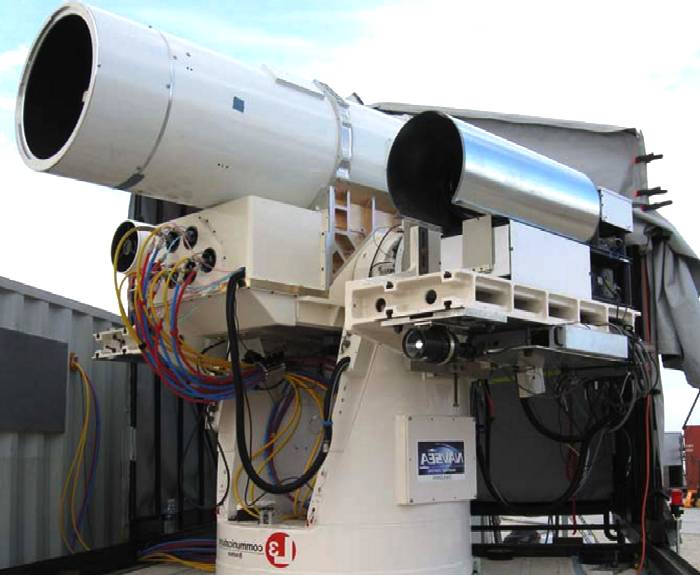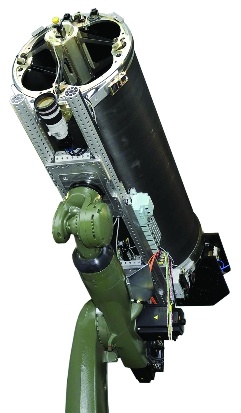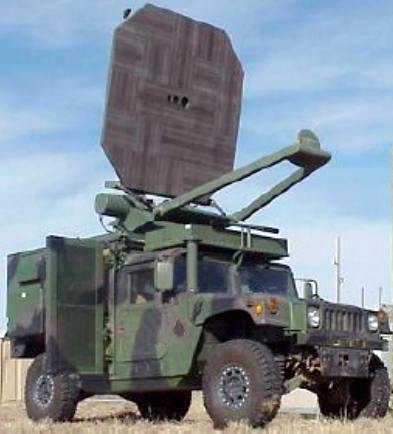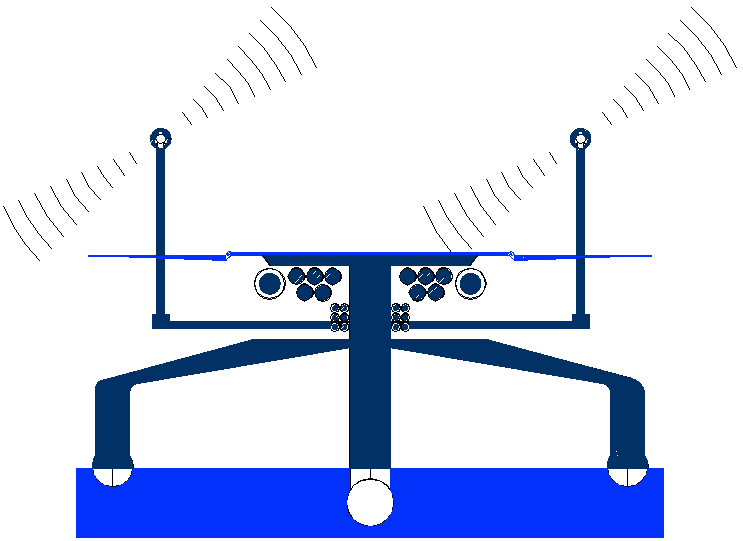|
LASERS - Directed High Energy Marine Weapons - LAWS
|
||||
|
It is a technological race to develop DEWs that are cheaper and more effective than using conventional weapons, especially concerning air attacks and piracy.
1. moving cars 2. drones 3. jetskis 4.
electronic devices such as mobile phones C. Sound, in sonic weapons
Clearly, it is possible to neutralize incoming aircraft and missiles, by disabling their electronic control systems. It is also possible to neutralize human foes, without killing them, such as to render them prisoners, or face yet more calming treatments. Such weapons will be ideal for anti-pirate patrols.
DEWs ADVANTAGES AND CHALLENGES
DEW weapons are said to be particularly useful for targeting large numbers of small, low-cost targets with high precision, and some estimates put the cost of each shot of directed energy at just $1.
Companies developing DEWs include US defence firm Raytheon, which began publicly demonstrating their weapons in conjunction with the US Navy back in 2010, and Europe’s MBDA, which last year demonstrated a 40kW laser that successfully hit airborne targets at a range of over 2,000m.
Directed energy weapons are often described as electromagnetic weapons as they do not employ some form of projectile motion. As such, directed energy weapons do not require the computation of ballistic trajectories to direct the beam at the target. This simplifies the aiming process for directed energy weapons. Also, re-directing the beam to new targets can be rapid.
In addition, the energy for the DEWs is ultimately derived from the conversion of electrical energy into the electromagnetic beam thus no additional shells, powder, etc are needed to make the system operational. Another advantage touted for these systems is that the output power level can be controlled so that the same system can be used for a variety of applications and/or to create a range of effects on the target (e.g. dazzling a sensor to destroying the target).
DEWs are being designed for use in situations where other weapons do not work well. Since DEWs cost more than standard kinetic energy or legacy weapons (such as rifles, guns and bombs), and are more complex, it doesn’t make economic sense to use DEWs unless other weapons simply can’t do the job.
DEWs have several key attributes: they deliver energy at the speed of light (near instantaneously: 186,000 miles/second); they deliver energy at an exact “line-of-sight” (you don’t have to correct for wind, and lasers are unaffected by gravity); and they have an “infinite” magazine (you don’t have to re-load bullets). These attributes may overwhelm cost considerations if nothing else can do the job – but again, they may not.
What effects do DEWs have on their targets? How would they affect living tissue?
DEWs transmit photons – packets of energy in the electromagnetic spectrum – [at wavelengths that] typically interact with a target from the “outside in”. A laser’s energy is absorbed on the target’s surface, and depending on the level of absorption and reflection, the laser burns through a target, layer-by-atomic layer. Thus, when a laser interacts with a target, there is not an instantaneous Buck Rogers-like explosion, but rather (depending on the energy) a burn through.
Laser radiation, as with any radiation source, can be harmful to living tissue. Eye tissue represents the most sensitive areas relative to laser exposure. Laser safety has been an inherent part of laser development since the invention of the laser. As a result, there is a well-established set of protocols relative to operating lasers in a safe manner. That said, high-energy lasers used in a weaponeering application present a challenging operational issue. At high energy levels, terms such as “eye-safe” region have no meaning or application.
Strategic lasers such as that demonstrated on the Boeing Airborne Laser testbed aircraft [which successfully] have a destructive range greater than 100 kilometres; tactical lasers, such as those projected for use on Navy ships, have less range.
Rheinmetall made
a demonstration of a "high-energy laser" (HEL) on 22/24 October in Ochsenboden (Switzerland)
integrated on a ATV BOXER. A complete development and qualification system C-Ram-based laser would be expected for 2020.
AUTONOMOUS LITTORAL SHIPS
For the purposes of this subject, we are assuming that weaponized unmanned maritime systems of increasing complexity and degree of autonomous operation will be deployed in the future by nearly all countries operating ships, etc. Indeed, that is our mantra. The focus of our analysis will be on the legal compliance as relates to the deployment of Seawolf enabled vessels.
MISSIONS FOR AUTONOMOUS LITTORAL SHIPS
The seven missions identified for the Combat ZCC are:
(1)
Mine Countermeasures (MCM);
SEMI AUTONOMOUS
“Fully autonomous” signifies full-scale autonomy, with a weaponized ASV making mission decisions from identification to classification to firing, based on pre-programmed parameters.
LINKS & REFERENCE
http://en.wikipedia.org/wiki/Directed-energy_weapon http://en.wikipedia.org/wiki/Electromagnetic_weapon http://en.wikipedia.org/wiki/Sea_Fighter http://www.bmtng.com/ http://en.wikipedia.org/wiki/Littoral_combat_ship List of sunken nuclear submarines http://en.wikipedia.org/wiki/Zumwalt_class_destroyer http://en.wikipedia.org/wiki/Hull_classification_symbol
SUBMARINE INDEX
Cruise missiles HMS Astute 1st of Class BAE Systems HMS Vanguard- Trident INS Sindhurakshak - explosion & sinking Littoral combat vessels Lusitania - Torpedo attack Predator - Covert submarine hunter/killer SAM missiles Seawolf - Autonomous wolf pack deployment of Predator mini-subs U20 - Kapitan Leutnant Walther Schwieger USS Bluefish WWI submarine USS Bluefish - Nuclear submarine USS Nautilus - 1st nuclear submarine & subsea north pole passage USS Virginia - Class nuclear submarines
|
||||
|
This website is Copyright © 2023 Bluebird Marine Systems. The names Bluebird™, Bluefish™, ZCC™ and the blue bird and fish in flight logos are trademarks.
|



